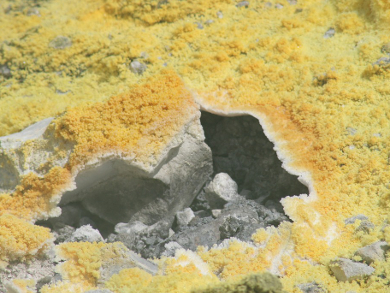Hydrogen sulfide is produced on a large scale as industry waste. It is toxic, corrodes equipment, poisons catalysts, and requires energy-intensive removal. Conventional gas-phase desulfurization relies on the Claus process, which yields low-value sulfur and water:
H2S + 1/2 O2 → 1/8 S8 + H2O.
Researchers have explored the direct decomposition of H2S through the generation of hydrogen gas, but these approaches are limited by unfavorable thermodynamics.
Yongan Yang and colleagues, Colorado School of Mines, Golden, USA, have devised a method for H2S removal based on a thermodynamically favorable reaction. Specifically, sodium naphthalenide (NaC10H8) is used to transform H2S into anhydrous Na2S nanocrystals while recovering hydrogen to form 1,4-dihydronaphthalene (C10H10):
2 NaC10H8 + H2S → Na2S + C10H10 + C10H8.
The two value-added products are used as battery materials and liquid fuels, respectively. The generated naphthalene (C10H8) can easily be recycled.
This process is driven by the acid/base reaction between protons from H2S and radical anions from naphthalenide. The reaction is spontaneous and irreversible at ambient temperature and pressure, and H2S is rapidly removed to below detection limits. This chemistry is expected to be quite flexible, and work is underway developing alternative reagents to direct the conversion of H2S into other value-added products.
- Thermodynamically Favorable Conversion of Hydrogen Sulfide into Valuable Products through Reaction with Sodium Naphthalenide,
Xuemin Li, Rachel M. Morrish, Yuan Yang, Colin A. Wolden, Yongan Yang,
ChemPlusChem 2015.
DOI: 10.1002/cplu.201500299




